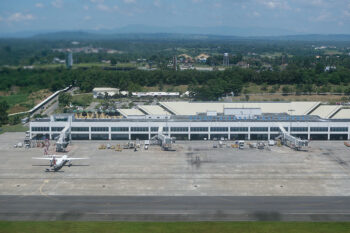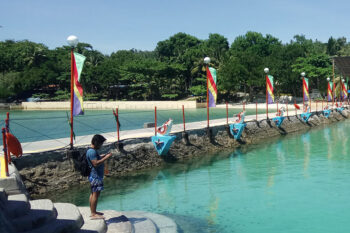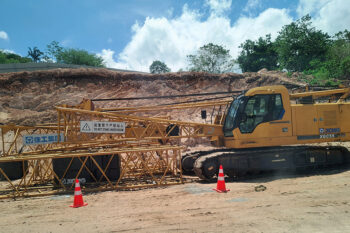MALAYBALAY CITY (MindaNews/ 6 December) – Tropical typhoon Pablo (international codename: Bopha) brought home the message that Mindanao (or at least most of its provinces) is beginning to lose its advantage as a typhoon-free island. Climate change has changed all that; the curse once confined to the rest of the country is now a creeping reality for the South.
In the past, storms and typhoons would only ravage the northeastern and northern part of Mindanao. Surigao, which directly faces the Pacific, took the hardest blows as the area where these weather disturbances would usually make a landfall. From there, storms would swerve towards the Visayas and Luzon regions, leaving the rest of Mindanao free to party outside their homes. At most, there would be rains and occasional gusts.
In short, the path of these natural events used to be predictable that Mindanaoans could afford to ignore alerts issued by weather forecasters and authorities.
But Pablo came, and from here on the people of Mindanao – in addition to the victims of storm Sendong last year – will have reason to fear storm warning signals. For one, Pablo made landfall not just in Surigao. Its “arrival area” stretched down to Compostela Valley and Davao Oriental, the provinces with the most number of casualties in Mindanao. Presumably, the residents there were yet to appreciate the dangers of being along the direct path of a typhoon that they – or local officials – must have taken minor preparations.
Indeed, Pablo’s unusual path proved to be something new for Mindanao. As far as I can remember since moving here in 1989, it was the first time that Pagasa, the state weather agency, hoisted storm signal number 3 over Bukidnon. Perhaps it was the first time too that the local government ordered classes suspended in all levels and all offices closed.
The heightened alert only bothered me a bit. Clouds had gathered the day before the typhoon came, but they drifted away by late afternoon, giving a false sense of security. It was only at dawn on Tuesday that an intermittent rain started to fall. Signal number 3, what’s that again? I reassured myself.
Pablo, however, had the last laugh. By 8 a.m., the rain had become sustained and heavier. Swirling gusts of wind pummeled the surroundings I thought the roof of our house would yield to it. Jean informed me that the road outside of their hotel in Cagayan de Oro City was already flooded while our daughters texted to say they were fine, although the one in Iligan said she had to make do with burgers as no other food stores were open.
But the real story – aside from the human lives that were lost – is the changing nature of storms and typhoons in the Philippines. What used to be unusual may become normal in the years ahead. A typhoon-free island? Think again. (MindaViews is the opinion section of MindaNews. H. Marcos C. Mordeno can be reached at hmcmordeno@gmail.com.)







